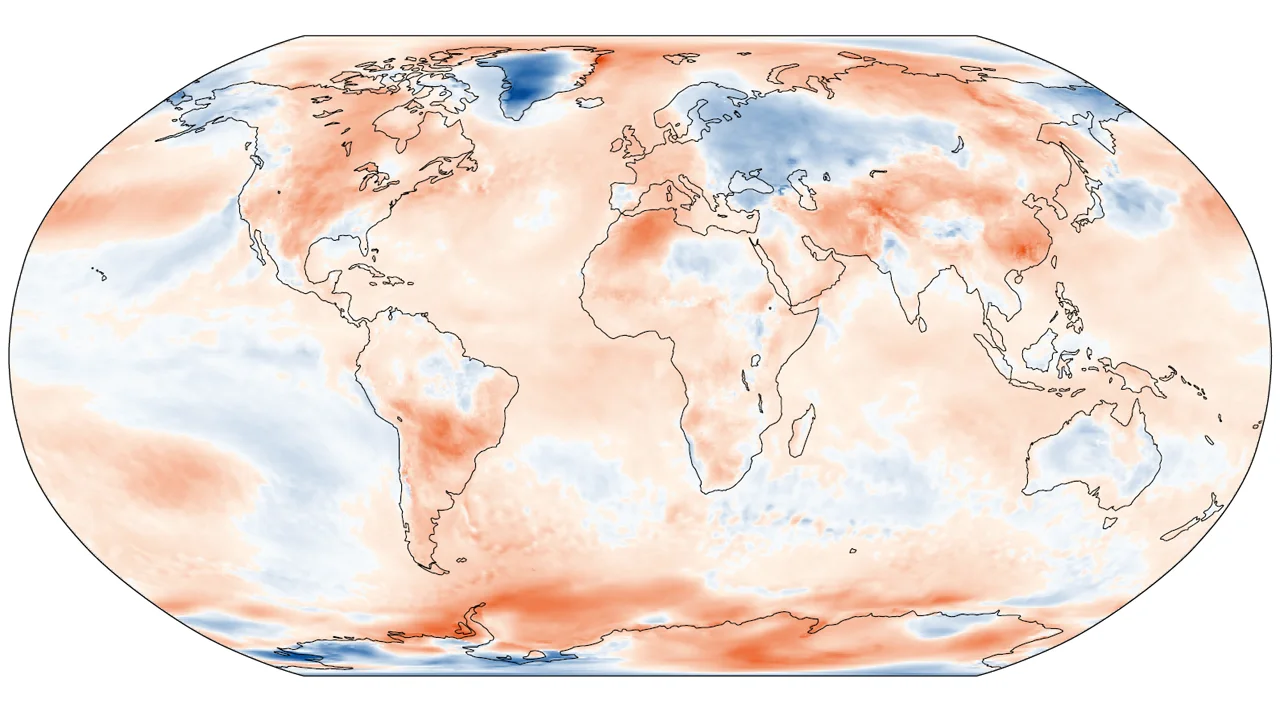
The world just experienced one of its warmest Septembers on record
Despite the cooling impacts of La Nina, 2021 is still ranking within the top ten hottest years in the record books.
Temperatures around the world continued to soar following the record hot meteorological summer the world just suffered. According to NASA and NOAA, September 2021 was one of the hottest months of September we've experienced so far.
The National Oceanic and Atmospheric Administration issued their latest global climate report this past week. Based on their data, it was one of the hottest months of September in the record books, at 0.90°C above the 20th century average of 15.0°C. Although that ranks it as fifth warmest, overall, it is second only to a four-way tie between the Septembers of 2015, 2016, 2019 and 2020 (which were all at +0.94°C). It was also the 441st consecutive month — that's over 36 years — where global temperatures were above the 20th century average.
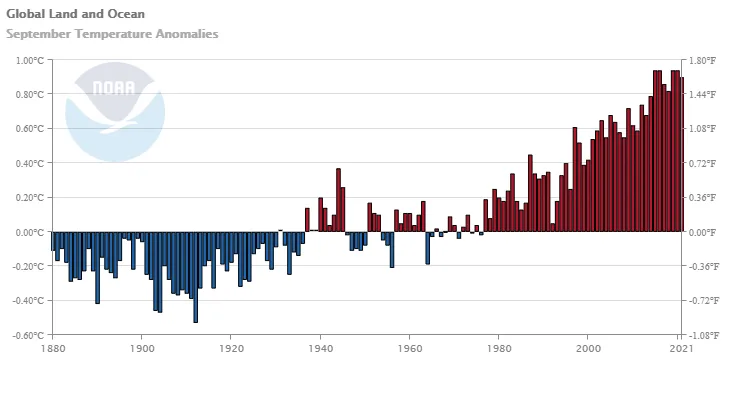
Global Temperatures for the month of September, from 1880 to 2021. Credit: NOAA
Counting temperatures recorded only over land, September 2021 jumps up into the second warmest spot, according to NOAA. Only September 2020 was warmer for the continents, in their books.
Notably, last month was the warmest September experienced in the southern hemisphere in 142 years of record keeping. This is particularly remarkable, given that it was winter at the time. Plus, La Niña conditions have been developing in the equatorial Pacific Ocean, lowering the temperatures across a wide swath of the region.
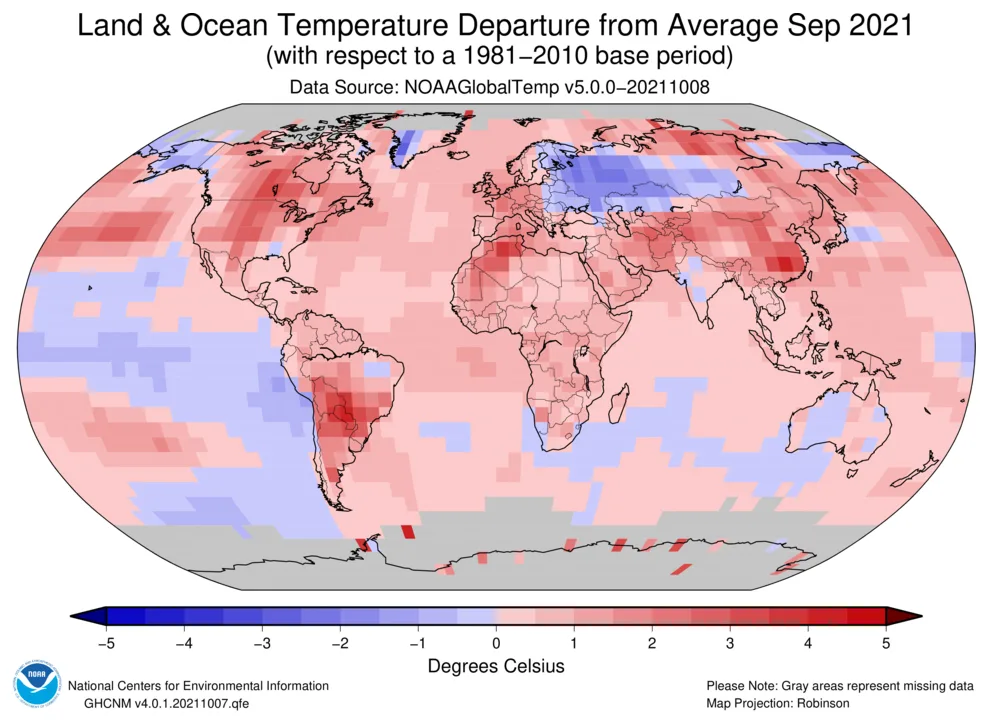
This map shows the hottest regions of the planet during September 2021. Credit: NOAA
Much of the heat across the southern hemisphere was concentrated over South America and Africa. Both continents saw their hottest September on record. Meanwhile, North America had its third warmest September, after 1998 and 2019. The outlier was Europe, which had its coolest September since 2013.
According to NASA's temperature records, last month was tied as second warmest with September 2019. Only September 2020 was warmer.
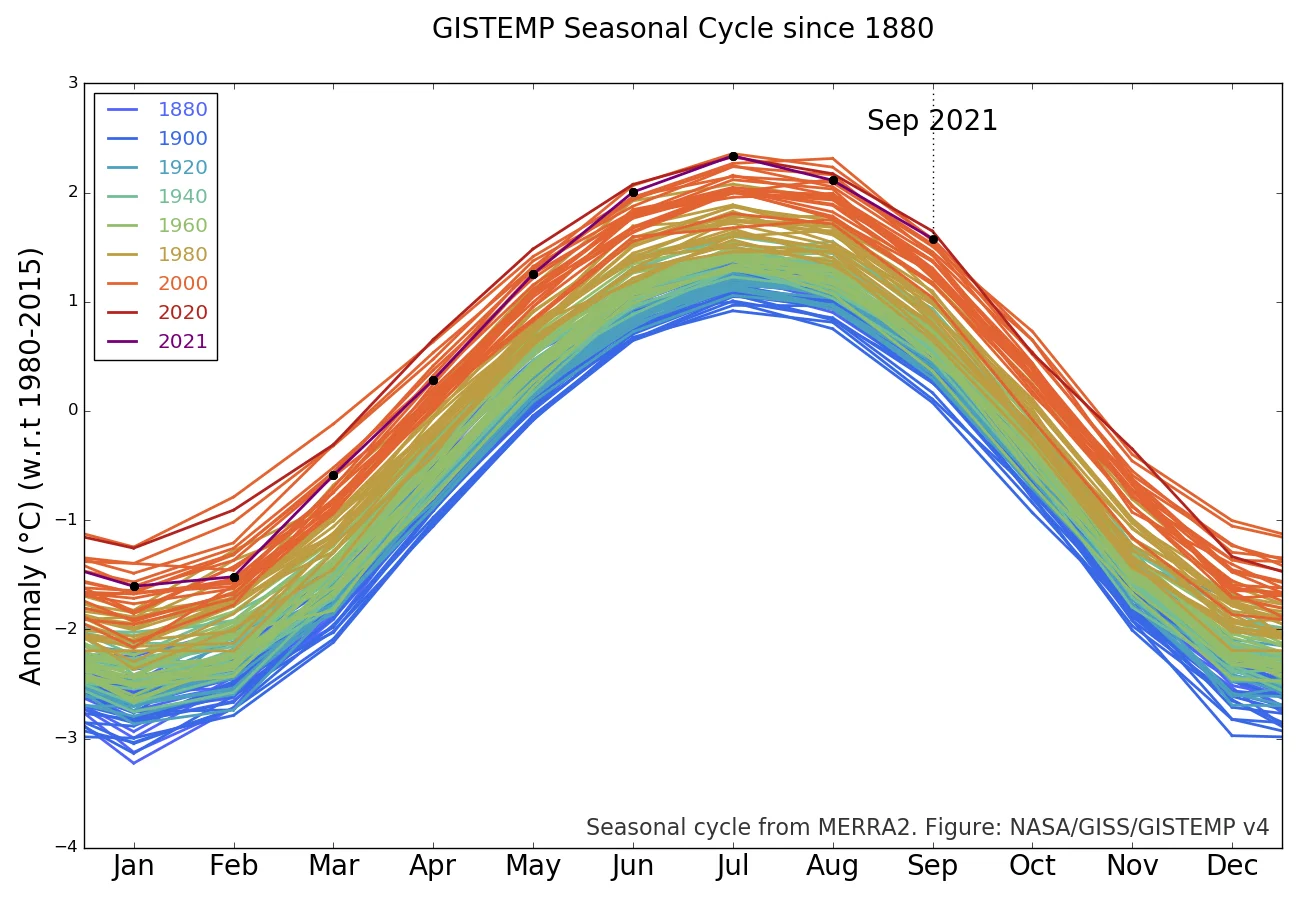
The seasonal cycle is captured in this climate graph. The black line represents 2021 so far. Credit: NASA GISS
Europe's Copernicus Climate Change Service generally agrees with these assessments. Based on their data, September 2021 definitely landed in the top four hottest months of September (along with 2016, 2019 and 2020). They also said that it most likely came in as second warmest, although they added that "only limited significance can be attached to rankings as the four warmest years differ in global-average temperature by less than 0.08°C."
CONTRASTS OVER ANTARCTICA
Due to weather patterns surrounding the south polar region, the continent of Antarctica experienced a strange duality. According to NASA, the Antarctic Peninsula suffered through the strongest temperature anomaly on the planet in September. In contrast, the continent's interior just saw its coldest winter on record.
Watch below: Meteorologist Tyler Hamilton breaks down the story behind Antarctica's frigid season.
With what we've seen so far this year, NOAA scientists are now over 90 per cent confident that 2021 will come in as the sixth warmest year on record.
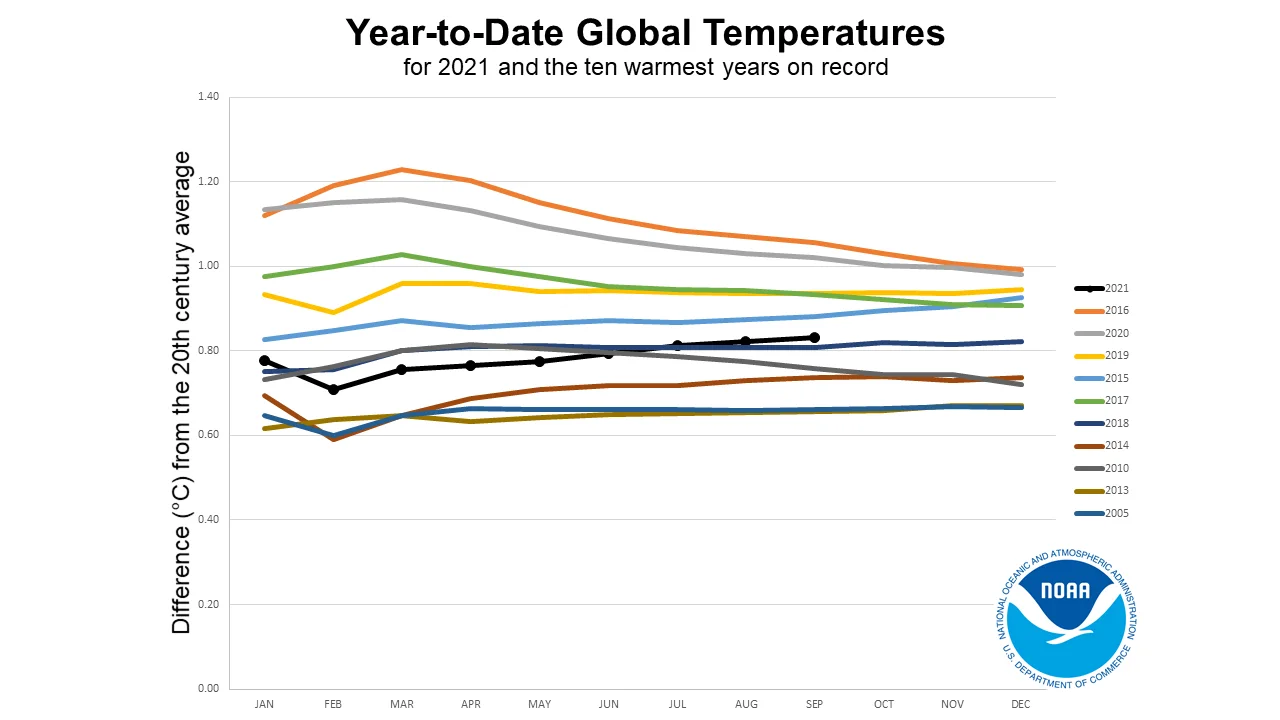
This graphic compares the year-to-date temperature anomalies for 2021 (black line) to what were ultimately the ten warmest years on record: 2016 (1st), 2020 (2nd), 2019 (3rd), 2015 (4th), 2017 (5th), 2018 (6th), 2014 (7th), 2010 (8th), 2013 (9th), and 2005 (10th). Each month along each trace represents the year-to-date average temperature anomaly. In other words, the January value is the January average temperature anomaly, the February value is the average anomaly of both January and February, and so on. Credit: NOAA
COP26 COMING SOON
At the end of October, climate scientists and government officials from around the world will be meeting in Glasgow, UK, for the UN Climate Change Conference, COP26.
The 2015 Paris Agreement set out the framework and commitments for the world's nations to tackle climate change and to make the necessary switch to clean and renewable energy. Now, six years later, world leaders must honour those commitments and become even more ambitious towards our goals.
"COP26 is not a photo op, nor a talking shop," Alok Sharma, the President for COP26, said in a speech on October 12. "It must be the forum where we put the world on track to deliver on climate. And that is down to leaders."
"It is leaders who made a promise to the world in Paris six years ago, and it is leaders that must honour it. Responsibility rests with each and every country, and we must all play our part, because on climate, the world will succeed, or fail, as one."
COP26 runs from October 31 to November 12, 2021.

